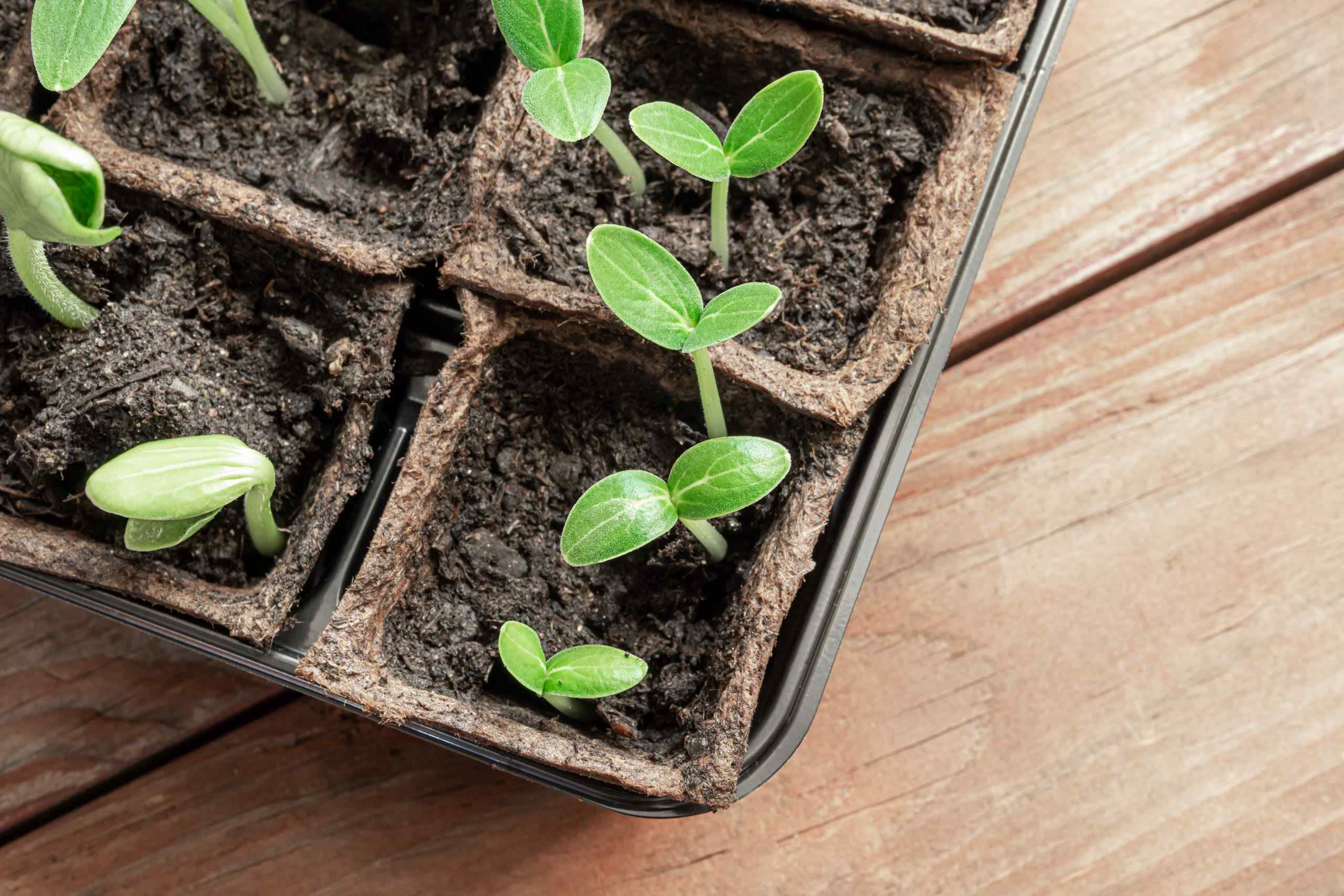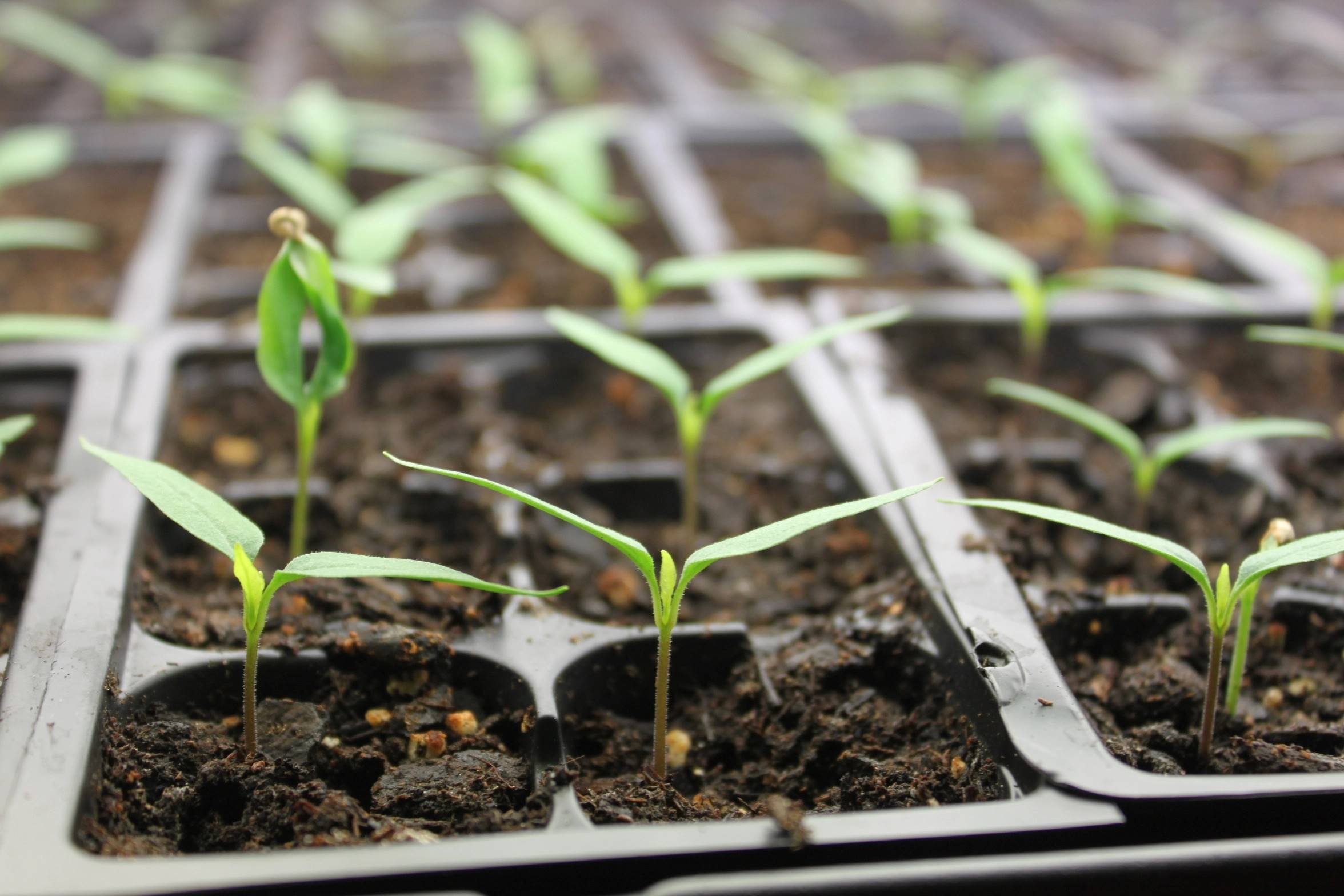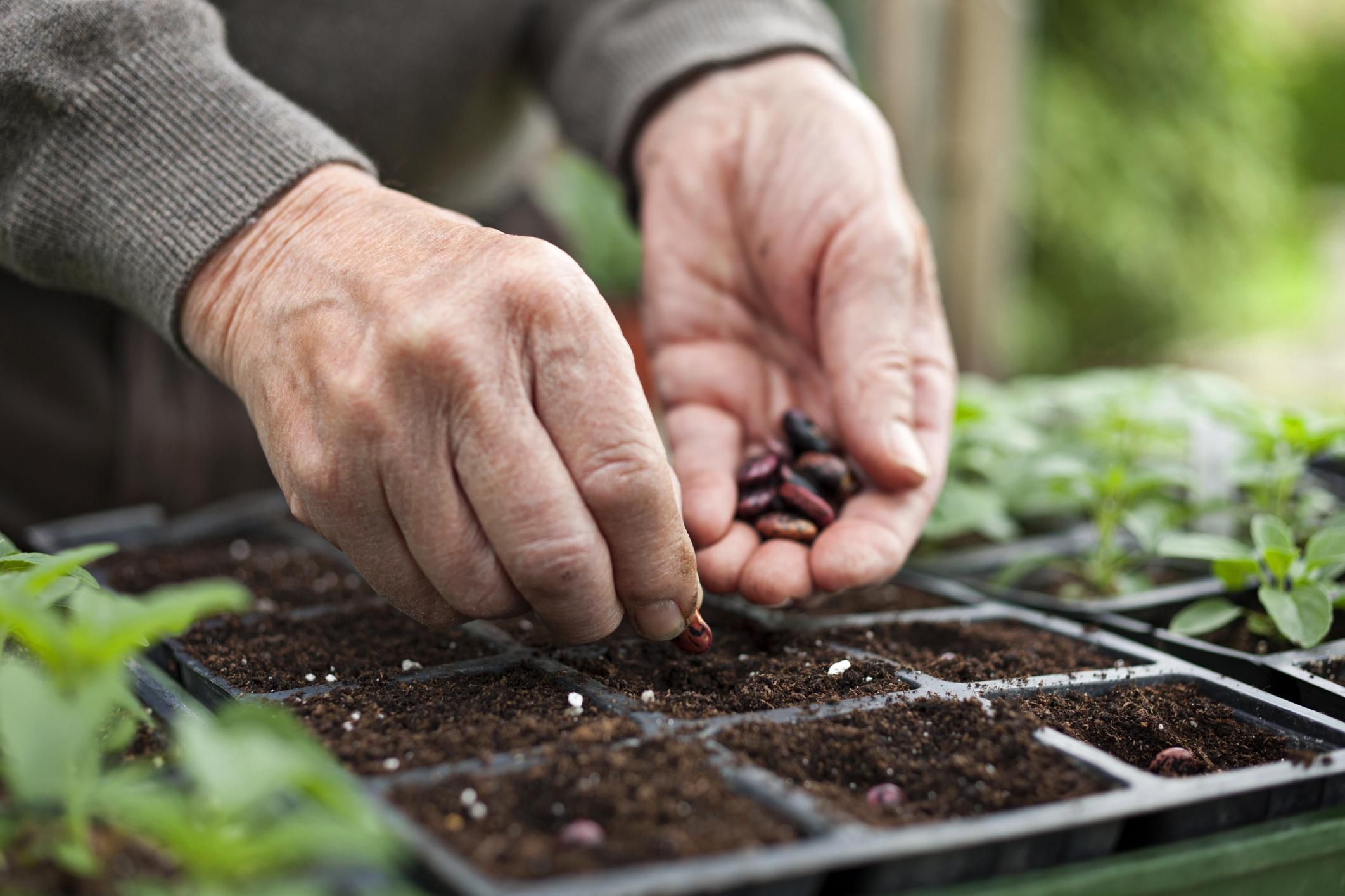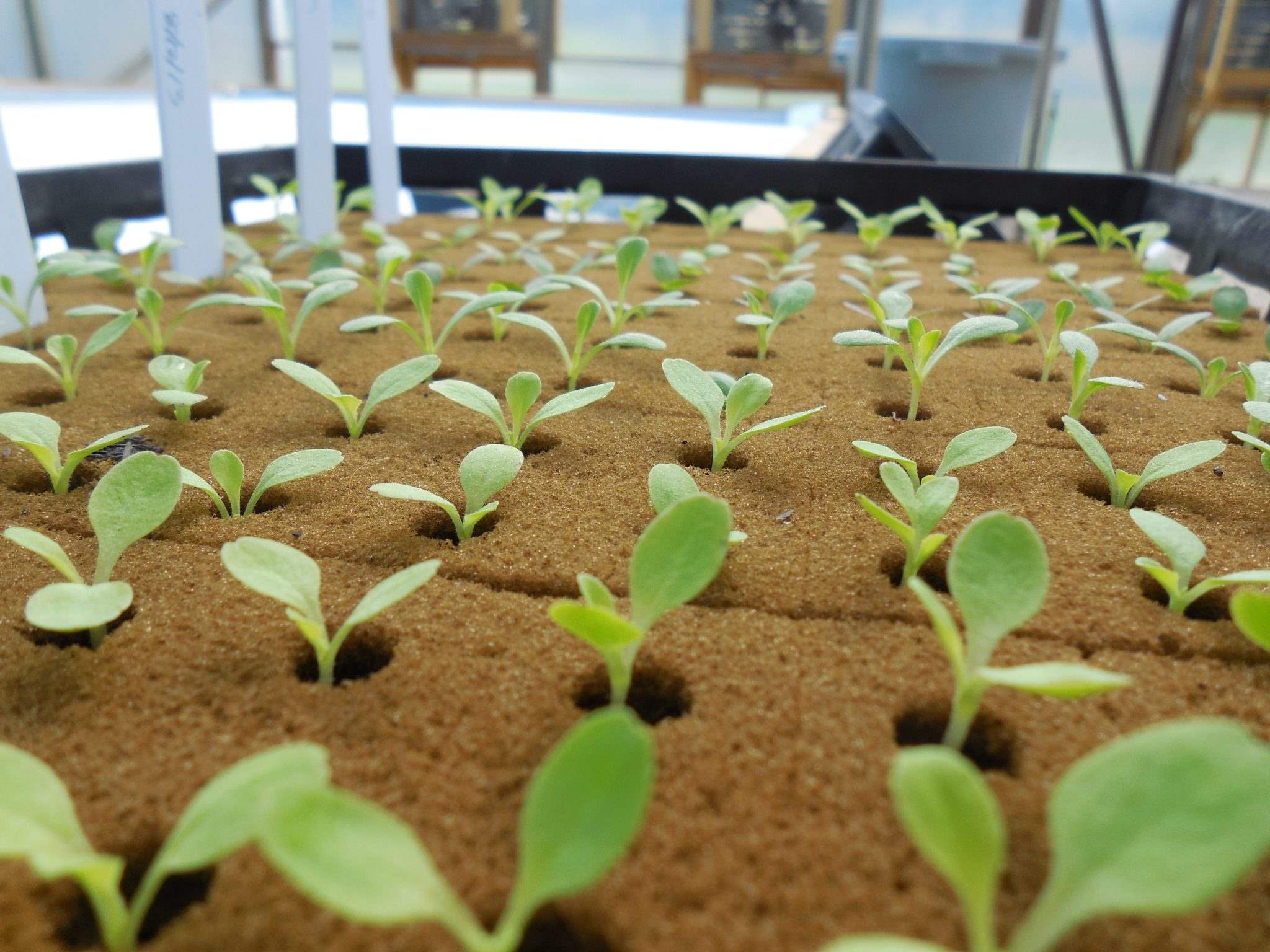Home>Gardening Tips and Tricks>Eco-Friendly Gardening>How To Start Seeds In Aeroponics


Eco-Friendly Gardening
How To Start Seeds In Aeroponics
Modified: January 22, 2024
Learn how to start seeds in aeroponics, an eco-friendly gardening method, and grow your own plants with maximum efficiency and minimal water usage.
(Many of the links in this article redirect to a specific reviewed product. Your purchase of these products through affiliate links helps to generate commission for Chicagolandgardening.com, at no extra cost. Learn more)
Table of Contents
Introduction
Welcome to the world of aeroponics, an innovative gardening technique that allows you to grow plants without the need for soil. This eco-friendly and efficient approach to gardening is not only gaining popularity but also revolutionizing the way we cultivate plants.
Aeroponics is particularly beneficial for starting seeds as it provides the optimal environment for germination and growth. In this article, we will explore the process of starting seeds in aeroponics, from choosing the right seeds to transferring seedlings to a larger system.
Whether you are an experienced gardener looking to expand your skills or a beginner with a passion for sustainable gardening, aeroponics is a wonderful technique to explore. Not only does it eliminate the need for soil, but it also conserves water, reduces pests, and promotes faster growth and higher yields.
So, if you’re ready to delve into the world of aeroponic gardening and enjoy the benefits it has to offer, let’s get started!
Benefits of Growing Seeds in Aeroponics
Growing seeds in aeroponics comes with a multitude of benefits that make it an attractive choice for gardeners of all levels. Let’s explore some of the key advantages:
- Rapid Germination: Aeroponics provides the ideal conditions for seed germination. The roots are suspended in a nutrient-rich mist, allowing the plants to absorb the necessary moisture and nutrients quickly. This leads to faster germination rates compared to traditional soil-based methods.
- Water Efficiency: Aeroponics is a highly water-efficient gardening technique. Unlike traditional soil-based methods that require constant watering, aeroponic systems use a misting system to deliver moisture directly to the plants’ roots. This significantly reduces water usage, making it an eco-friendly and sustainable choice.
- Space Saving: As aeroponic systems require no soil, they take up less space compared to traditional gardening methods. This makes aeroponics an excellent option for those with limited garden space, such as urban dwellers or apartment gardeners.
- Pest and Disease Control: Growing seeds in aeroponics helps reduce the risk of pests and diseases that often thrive in soil. Without soil, there is a lower chance of soil-borne pathogens affecting your plants. Additionally, the absence of soil minimizes the risk of weed growth, saving you time and effort in weed control.
- Higher Yields: Aeroponic systems promote healthier and stronger root development, which translates to higher yields. The roots have increased access to oxygen and nutrients, leading to more robust plants that produce an abundance of fruits, vegetables, and flowers.
- Year-Round Growing: With aeroponics, you have the flexibility to grow seeds and plants year-round, regardless of the climate or season. By controlling the temperature, light, and nutrient levels in your aeroponic system, you can create an optimal growing environment for your seeds, ensuring continuous growth and harvest.
As you can see, there are numerous benefits to growing seeds in aeroponics. From faster germination and higher yields to water efficiency and space-saving capabilities, aeroponics offers a sustainable and efficient way to cultivate your plants.
Now that we understand the advantages, let’s move on to explore how to choose the right seeds for aeroponics.
Choosing the Right Seeds for Aeroponics
When it comes to selecting seeds for aeroponics, there are a few factors to consider. Choosing the right seeds will greatly contribute to the success and productivity of your aeroponic garden. Here are some tips to help you make the best choices:
- Select Suitable Varieties: Not all plants thrive in aeroponic systems, so it’s important to choose varieties that are well-suited for this growing method. Leafy greens like lettuce, spinach, and kale, as well as herbs such as basil and cilantro, are excellent options for aeroponics. Additionally, compact vine plants like cherry tomatoes and cucumbers can also be successfully grown in aeroponic systems.
- Look for Disease-Resistant Seeds: Since aeroponics minimizes the risk of soil-borne diseases, it’s still a good idea to choose seeds that are disease-resistant. Look for seeds that have been bred to resist common diseases that could affect the specific plants you intend to grow.
- Consider Seed Quality: Opt for high-quality seeds from reputable sources. Look for seeds that are fresh, viable, and have a high germination rate. This will ensure that your aeroponic garden starts off on the right foot and increases the chances of successful seedling development.
- Explore Quick-Growing Varieties: While not a necessity, selecting quick-growing varieties can be advantageous in aeroponics. They will germinate and produce harvestable crops faster, allowing for more frequent crop rotations and a continuous supply of fresh produce.
- Adapt Seeds to Your Preference: Consider your personal preferences and the purpose of your aeroponic garden. Decide whether you want to grow flowers for aesthetic purposes or focus on growing edible plants for a sustainable food source. This will help guide your seed selection process.
Remember to read the seed packets or consult reputable sources and gardening experts for specific recommendations on which seeds are best suited for aeroponics. Each plant has different requirements, so it’s important to ensure that the seeds you choose align with the conditions and capabilities of your aeroponic system.
Now that we have discussed choosing the right seeds, let’s move on to exploring how to prepare your aeroponic system for planting.
Preparing the Aeroponic System
Before you can start planting your seeds in the aeroponic system, it’s crucial to properly prepare the setup to create an optimal growing environment. Here are the steps to follow when preparing your aeroponic system:
- Clean and Sanitize: Thoroughly clean and sanitize all the components of your aeroponic system, including the reservoir, misters, and tubing. This helps prevent the buildup of harmful bacteria, algae, and pathogens that could negatively impact plant health.
- Check pH and Nutrient Levels: Test the pH level of the water in the reservoir using a pH testing kit. Ideally, the pH should be between 5.5 and 6.5 for most plants. Additionally, ensure that the nutrient solution in the reservoir is properly balanced according to the specific requirements of the plants you wish to grow.
- Install Mist Nozzles: Install mist nozzles or sprayers in your aeroponic system, ensuring they are positioned correctly to evenly distribute the nutrient solution. Follow the manufacturer’s instructions for proper installation and maintenance of the misting system.
- Set Up Lighting: Adequate lighting is essential for the growth of your seeds in an aeroponic system. Install an appropriate grow light that provides the necessary spectrum and intensity for plant growth. Position the light at the correct distance from the seedlings to prevent leggy growth and light burn.
- Monitor Air Temperature and Humidity: Aim for an optimal air temperature and humidity level in your aeroponic system. Most plants thrive in temperatures between 70-80°F (21-27°C) and humidity levels between 50-70%. Use a thermometer and hygrometer to monitor and adjust the conditions accordingly.
- Test the System: Test your aeroponic system to ensure that all components are functioning properly. Run the system without any plants for a brief period to check if the misting system is providing a fine mist, the pump is working efficiently, and there are no leaks or clogs in the system.
By following these steps, you will create an optimal environment for your seeds to thrive in an aeroponic system. Proper preparation is key to the success of your garden, as it ensures that the plants receive the essential nutrients, moisture, and conditions necessary for robust growth.
Now that we have prepared the aeroponic system, let’s move on to the exciting part – planting the seeds in the aeroponic system!
Planting Seeds in Aeroponics
Now that your aeroponic system is prepared, it’s time to plant your seeds and kickstart the growth process. Follow these steps to ensure successful planting in your aeroponic system:
- Prepare Seed Pots or Trays: Use small seed pots or trays that fit comfortably in your aeroponic system. Fill them with a sterile seed starting mix or a medium that promotes good drainage and aeration.
- Sow the Seeds: Carefully sow the seeds according to the recommended planting depth provided on the seed packet. Make sure to space the seeds evenly to avoid overcrowding. Lightly press the seeds into the growing medium, ensuring they have good contact with the moisture-rich environment.
- Place the Seed Pots or Trays: Position the seed pots or trays in your aeroponic system. Ensure that they are securely held in place and can receive the mist from the misting system without obstruction. Adjust the positioning of the mist nozzles if necessary.
- Optimize Lighting: Place your aeroponic system under the grow light at the recommended distance for seed germination. Adequate light is crucial for photosynthesis and healthy seedling development. Adjust the lighting duration to provide a minimum of 12-16 hours of light per day.
- Maintain Proper Moisture Levels: Monitor the moisture levels of the growing medium and adjust the misting or watering frequency accordingly. Avoid over-saturating the medium, as excess moisture can lead to root rot. Aim to keep the growing medium consistently moist but not waterlogged.
- Monitor and Adjust: Regularly monitor the progress of your seeds as they germinate and grow. Ensure that the temperature, humidity, nutrient levels, and pH are within the appropriate range. Make any necessary adjustments to maintain optimal conditions for seedling growth.
It’s important to note that different plant varieties have specific requirements for seed germination. Refer to the seed packet or trusted gardening resources for recommendations on temperature, humidity, and approximate germination time for each type of seed.
By following these planting steps and providing the necessary care, your seeds will begin to sprout and grow into healthy seedlings. Now, let’s move on to the next section, which covers how to provide optimal conditions for seed germination in your aeroponic system.
Providing Optimal Conditions for Seed Germination
Creating and maintaining the optimal conditions for seed germination is crucial to ensure successful growth and healthy seedlings in your aeroponic system. Here are some key factors to consider:
- Temperature: Different plant species have specific temperature requirements for optimal seed germination. Generally, most seeds germinate best in temperatures ranging from 70-80°F (21-27°C). Use a thermometer to monitor the temperature in your aeroponic system and provide heating or cooling if necessary.
- Humidity: Adequate humidity is essential for seed germination. The ideal humidity level for most seeds is between 50-70%. To maintain the appropriate humidity, you can use a humidity dome or cover the seed pots or trays with plastic wrap. Regularly check the moisture levels and adjust as needed to prevent excessive drying or overly saturated conditions.
- Lighting: Light is a crucial factor in seed germination. Most seeds require light to germinate, although some varieties prefer darkness. Ensure that your seeds receive the appropriate amount and duration of light based on their specific requirements. Adjust the distance and duration of the grow light accordingly.
- Nutrient Solution: While seeds do not require a strong nutrient solution during germination, it’s essential to ensure that your aeroponic system provides adequate nutrients for the seedlings. Follow the manufacturer’s instructions or consult a gardening expert to determine the appropriate nutrient strength for seed germination and early growth stages.
- Air Circulation: Good air circulation helps prevent fungal diseases and promotes healthier seedling growth. Ensure there is proper ventilation in your aeroponic system to allow fresh air exchange. Circulating fans can be used to enhance air circulation and strengthen the seedlings.
- Patience and Observation: Each seed has its own germination timeline. Be patient and allow the necessary time for your seeds to sprout. Regularly monitor the progress of your seedlings, checking for signs of growth and adjusting the conditions as needed.
By providing the optimal conditions for seed germination, you are setting the foundation for healthy and vigorous seedlings in your aeroponic system. Remember to consider the specific requirements of the plant species you are growing and make any necessary adjustments to temperature, humidity, lighting, and nutrient levels.
Now that we have covered the essentials of optimizing seed germination, it’s time to explore some common issues that you may encounter and how to troubleshoot them in your aeroponic system.
Troubleshooting Common Issues
While aeroponics provides an efficient and effective way to grow seeds, it’s not uncommon to encounter a few challenges along the way. Here are some common issues that may arise in your aeroponic system and how to troubleshoot them:
- Poor Germination: If you notice low germination rates, first check the temperature and humidity levels in your aeroponic system. Ensure that they are within the recommended range for the particular seeds you are growing. Additionally, make sure that the seeds are fresh and viable. If necessary, consider adjusting the pH level of the nutrient solution or providing additional lighting.
- Mold or Algae Growth: Excessive moisture or poor air circulation can lead to the growth of mold or algae. To combat this issue, ensure proper ventilation in your aeroponic system and avoid over-watering. Adjust the misting frequency or consider incorporating a fan to improve air circulation. If mold or algae appear, manually remove it and adjust the system to prevent further growth.
- Root Rot: Root rot can occur if the roots are consistently overly saturated with moisture. Ensure that the growing medium has good drainage and that the misting system is not constantly drenching the roots. Adjust the misting intervals to allow some drying time between cycles. If root rot is detected, trim off affected roots and consider using a beneficial root inoculant to promote healthy root development.
- Leggy Seedlings: Leggy seedlings occur when plants grow tall and weak with elongated stems due to inadequate lighting. To prevent this issue, ensure that your grow light is positioned at the appropriate distance from the seedlings. Adjust the light intensity and duration to provide enough light for strong and compact growth. If seedlings become leggy, you can replant them deeper in the growing medium, burying the elongated stem partially.
- Nutrient Imbalance: Over or underfeeding your seedlings can lead to nutrient imbalances and stunted growth. Monitor the pH and nutrient levels in your aeroponic system regularly. Adjust the nutrient strength according to the growth stage of your seedlings and the specific requirements of the plants. If necessary, flush the system with clean water to remove any excess nutrients and start fresh with a balanced nutrient solution.
By troubleshooting these common issues and implementing appropriate solutions, you can overcome challenges and ensure the success of your aeroponic seedlings. Remember to closely observe your plants, make adjustments as needed, and seek guidance from experienced gardeners or resources if necessary.
Now that we have addressed troubleshooting common issues, let’s move on to the next section, which covers transferring seedlings to a larger aeroponic system.
Transferring Seedlings to a Larger Aeroponic System
As your seedlings grow and develop in your initial aeroponic system, they will eventually outgrow their space. Transferring them to a larger aeroponic system will provide them with the necessary room to continue thriving. Here’s how you can successfully transplant your seedlings:
- Prepare the New System: Set up the larger aeroponic system, ensuring that it is clean and sanitized. Check the pH and nutrient levels of the new system to ensure they are suitable for the seedlings.
- Carefully Remove Seedlings: Gently remove the seedlings from their current pots or trays, being cautious not to damage the delicate roots. Carefully loosen the growing medium around the seedlings and lift them out with minimal disruption to the roots.
- Plant Seedlings in the New System: Place the seedlings in the new aeroponic system, positioning them in the designated spots to allow for proper spacing and growth. Burrow the root system into the growing medium, ensuring secure contact between the roots and the medium.
- Ensure Adequate Support: Depending on the size and growth habit of the seedlings, provide support if needed. Use stakes or trellises to help the plants grow upright and prevent bending or breaking of stems.
- Adjust Water and Nutrient Levels: Monitor the water and nutrient levels in the new aeroponic system. Make any necessary adjustments to ensure the appropriate moisture and nutrient supply for the growing seedlings.
- Transition Seedlings Gradually: To allow the seedlings to acclimate to the new environment, gradually increase the lighting duration and intensity over a few days. This will prevent shock and aid in the seedlings’ successful transition to the larger system.
Transferring seedlings to a larger aeroponic system provides them with the space and resources needed for continued growth and development. Pay close attention to the new system’s conditions and make any necessary adjustments to ensure the seedlings adapt smoothly.
Now that we have covered the process of transferring seedlings to a larger system, you are well-equipped to continue the journey of cultivating your plants in an aeroponic environment.
Conclusion
Congratulations on completing your journey through the world of aeroponic gardening for seed starting. By harnessing the power of aeroponics, you can create a sustainable and efficient way to grow seeds and nurture healthy plants.
We began by discussing the numerous benefits of growing seeds in aeroponics, including rapid germination, water efficiency, space saving, pest control, higher yields, and year-round growing capabilities. These advantages make aeroponics an appealing choice for gardeners seeking a productive and eco-friendly gardening method.
We then delved into the process of choosing the right seeds for aeroponics, emphasizing the importance of selecting suitable varieties, looking for disease-resistant seeds, considering seed quality, exploring quick-growing varieties, and adapting the seeds to your preference or purpose.
Next, we explored the essential steps of preparing the aeroponic system, from cleaning and sanitizing the components to checking pH and nutrient levels, installing mist nozzles, setting up lighting, monitoring air temperature and humidity, and conducting system tests.
With the system prepared, we moved on to the crucial phase of planting seeds in aeroponics. We discussed the steps of preparing seed pots or trays, sowing the seeds, placing them in the system, optimizing lighting, maintaining proper moisture levels, and regularly monitoring the seedlings’ progress.
Providing optimal conditions for seed germination was also a key topic, as we explored the importance of temperature, humidity, lighting, nutrient solution, air circulation, and patience in creating the ideal environment for healthy germination and early growth.
In addition, we covered common issues that may arise in aeroponic systems, such as poor germination, mold or algae growth, root rot, leggy seedlings, and nutrient imbalances. Strategies to troubleshoot and overcome these challenges were provided to help you tackle any problems that may arise.
Finally, we discussed the process of transferring seedlings to a larger aeroponic system to accommodate their continued growth. From preparing the new system to carefully transplanting the seedlings and adjusting the water and nutrient levels, we ensured a seamless transition for successful plant development.
With the knowledge and guidance provided in this article, you now have the tools and insights to embark on your own aeroponic seed starting adventure. Embrace the possibilities of this innovative gardening technique and enjoy the rewards of healthy, thriving plants grown in an eco-friendly manner.
Happy aeroponic gardening!






